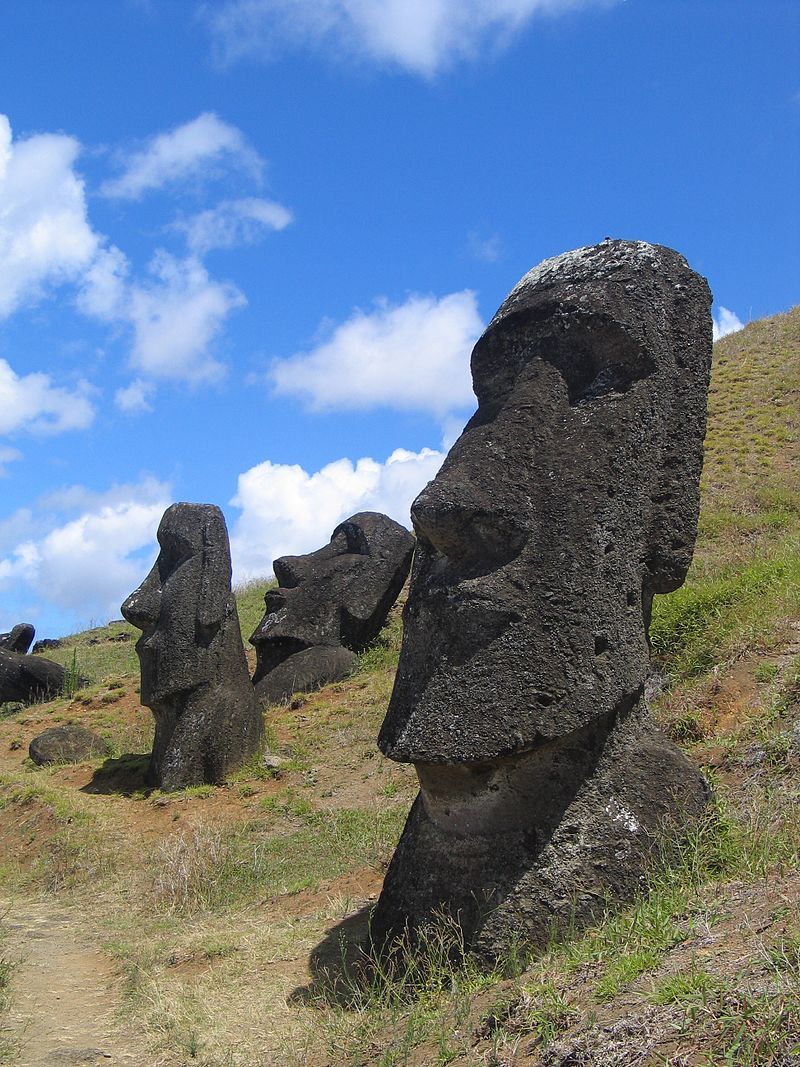Norway Will Repatriate Thousands of Artifacts Taken From Easter Island
Thor Heyerdahl Jr. says his late father had promised to return the items after they had been analyzed and detailed in published works
/https://tf-cmsv2-smithsonianmag-media.s3.amazonaws.com/filer/50/83/5083dccd-2f34-4f1b-961c-a0cff9a6da44/2gettyimages-541537857.jpg)
In 1955, Norwegian explorer and ethnographer Thor Heyerdahl organized an expedition to Easter Island. Over the course of this trip and a follow-up visit during the 1980s, he sought to test the theory that the Polynesian islands could have been initially settled by individuals traveling from South America, collecting thousands of artifacts—including tiny sculptures retrieved from caves, ancient weapons and human remains—pertinent to proving this premise. Although Heyerdahl promised to return the items after analyzing and publishing his findings, he would not live to see this pledge fully fulfilled.
Some 17 years after the ethnographer's death in 2002, his native country is finally acting on that promise to send the artifacts home. As Agence France-Presse reports, Norway has officially agreed to return the objects to the island’s indigenous Rapa Nui community.
King Harald V and Queen Sonja of Norway signed the agreement, which pledges to transfer items from Oslo’s Kon-Tiki Museum to a “well-equipped” museum on Easter Island—likely the Father Sebastian Englert Anthropological Museum, according to Al Jazeera—during a recent state visit to the Chilean capital of Santiago. The explorer’s son, Thor Heyerdahl Jr., was also in attendance.
“This was what my father wanted,” Heyerdahl Jr., who accompanied his father on the 1955 trip as a teenager, told Norwegian state broadcaster NRK, as translated by the Telegraph’s Richard Orange. “This was extremely emotional for me, an absolute joy, and my father would probably have said exactly the same about the objects being given back.”
In an email to Smithsonian.com, Heyerdahl Jr. writes that his father was “obliged to return artifacts defined as archaeology”—as opposed to ethnographic items purchased from locals—“as soon as they had been studied.” Despite the fact that the explorer's most popular account of Easter Island, a monograph titled Aku Aku, was published in 1958, the explorer's son explains that more rigorous technical assessment continued for more than 30 years, culminating in the publication of several lengthy scientific reports.
During Heyerdahl's lifetime, he adds that he personally repatriated several artifacts, including the body of a statue and pollen samples from the presumed extinct totora tree. Although DNA analysis of the human remains is still ongoing, Heyerdahl Jr. says that such materials will be prioritized during the repatriation process.
It remains unclear exactly when the artifacts will be returned, but a press release published by Chile’s culture ministry notes that the process “will take time.” Martin Biehl, director of the Oslo museum, explains, “Our common interest is that the objectives are returned and, above all, delivered to a well-equipped museum.”
During the ceremony, King Harald gave Chilean representatives a flash drive containing, according to Norwegian newspaper Aftenposten, digitized versions of some 1,800 photographs taken by Heyerdahl during his trips to the island. The actual images, in addition to the objects set to be repatriated, are currently held by Oslo’s Kon-Tiki Museum, which is named after an expedition Heyerdahl embarked on in 1947.

The 3,728-mile journey found Heyerdahl sailing from Peru to Polynesia’s Raroia atoll on a makeshift balsawood raft and vindicated the explorer's belief that ancient South Americans were capable of traveling across the Pacific and therefore could have settled in Polynesia. Comparatively, most of Heyerdahl’s contemporaries were convinced the region had been populated by migrants from Asia.
During his first expedition to Easter Island, Heyerdahl and his team disproved a misconception surrounding the giant stone sculptures known as Moai. By excavating the area around the towering heads cemented in popular imagination, the researchers realized the heads also had torsos that had long been hidden underground.
Heyerdahl’s second venture centered on a local legend that posited the statues had “walked” to their resting places across the island. With the help of Czech engineer Pavel Pavel and 16 locals, the explorer tied ropes around a standing Moai’s head and base, then pulled it along the ground to mimic the act of walking. In other words, the Kon-Tiki Museum points out, transporting the 15-ton monoliths may not have been as difficult as anticipated.
The repatriation agreement was lauded as an “emotional moment” by Easter Island’s governor Tarita Alarcón Rapu.
The Rapa Nui’s efforts to recover Hoa Hakananai’a, a sculpted basalt head removed from the island in 1868 and currently on view at London’s British Museum, remain ongoing.
Last November, the British Museum hosted a delegation of Rapa Nui people for a discussion of the sculpture’s future. “We are just a body,” governor Rapu told press during the representatives’ visit. “You, the British people, have our soul.”
Although the meeting marked the first time the London institution entered such talks, little progress was made. To date, the museum has only indicated openness to loaning, not returning, the statue.
/https://tf-cmsv2-smithsonianmag-media.s3.amazonaws.com/accounts/headshot/mellon.png)
/https://tf-cmsv2-smithsonianmag-media.s3.amazonaws.com/accounts/headshot/mellon.png)